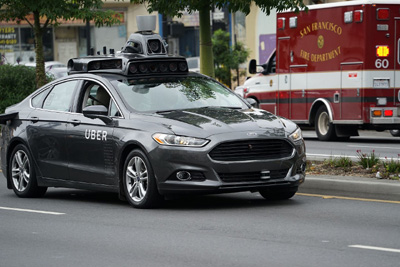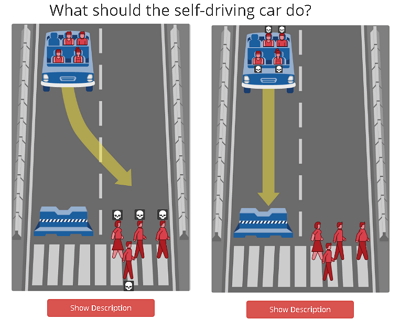You’re not far from sharing the city streets and highways with “self-driving” cars, and aside the from the ethical and technological concerns, you’ll also have to worry about what will happen if one plows into you during your commute.
Make no mistake, self-driving, autonomous cars are the future. While developers say self-driving cars will prove to be safer through their melding of sensors and analytical software, there’s one rule that applies to everything in this wide world; Murphy’s Law. You can call it the Second Law of Thermodynamics if that suits your sensibilities, but there’s yet to be a technology which is entirely glitch-free.

Developers are already diving deep into the ethical considerations which need to be in place to control the decision-making algorithms at the core of self-driving cars. Developers and ethicists at the Massachusetts Institute of Technology have created what they call Moral Machine to help define the parameters which might one day limit the operational aspects of how autonomous vehicles will interact with the world around them.
The project is meant to envision the ways self-driving cars on public roads and even self-flying aircraft in the skies will make critical decisions when faced with moral dilemmas. As machine intelligence interacts with complex human activities, the autonomy of vehicles controlled by machine intelligence is certain to result in situations where such vehicles make autonomous choices – and those selections will involve human beings and their imperfections.
MIT says Moral Machine is meant to “provide a platform for building a crowd-sourced picture of human opinion on how machines should make decisions when faced with moral dilemmas, and crowd-sourcing assembly and discussion of potential scenarios of moral consequence.”
The ethical considerations are hardly a new development. Consider for a moment the “trolley problem,” a thought experiment in ethics.
Here’s the problem in a nutshell: A runaway trolley is careening down a set of railway tracks. On the tracks ahead, five people tied up and unable to escape. As the trolley thunders inevitably toward the five, you find yourself standing in the train yard next to a lever. If you pull the lever, the trolley will switch off its course and onto another set of tracks. The problem? There’s a single person on the other set of tracks. You have only two options.
If you do nothing, the trolley crushes and kills the five people on the main track. If you pull the lever, the trolley takes the side track and then crushes and kills the one person.
At the core of the problem is how human beings make what they consider the “most ethical choice.”
Other versions of the problem introduce further ethical and moral complexities, but the variants are now a critical part of any discussion of the ethics in designing systems to control autonomous vehicles.
If all this isn’t muddled enough for your tastes, how about adding another level of difficulty to the discussion. Once a machine makes a decision which results in human injury or death, who’s responsible for that injury or death, and beyond that consideration, whose insurance will cover the resulting claims?
According to NPR, an accident which recently took place in Tempe, Ariz., involved a self-driving Uber car and raised issues in regard to who will bear the fault and liability in the event an autonomous vehicle causes an accident. Thus far the insurance industry is at a loss as to how these new technologies will impact their clients.
Warren Buffett, no slouch when it comes to predicting money trends, has a sobering message for insurers.
“If the day comes when a significant portion of the cars on the road are autonomous, it will hurt Geico’s business very significantly,” Buffet said.
Life Insurance Tips for 2017
Forbes Says You Need Life Insurance, So Listen Up and Find It Here at the Best Price
Does Having Adult ADHD Affect Life Insurance Rates?
The Indianapolis 500 and Planning For the Unthinkable
Inventory of Important Papers After a Loved One’s Death
How Should I Track My Life Insurance Policy?
Could My Genetic Makeup Prevent Me From Buying Life Insurance?
NAIC Task Force Aims to Track and Guide Insurance Innovations
Is A Waiver of Premium Rider Worth the Cost?
The Sensible Reasons for Purchasing a Life Insurance Policy
Tips for Finding a Lost Life Insurance Policy
Differences Between Variable, Variable Universal Life Insurance
Insurance Consumers Score Big With NAIC Life Insurance Policy Locator












